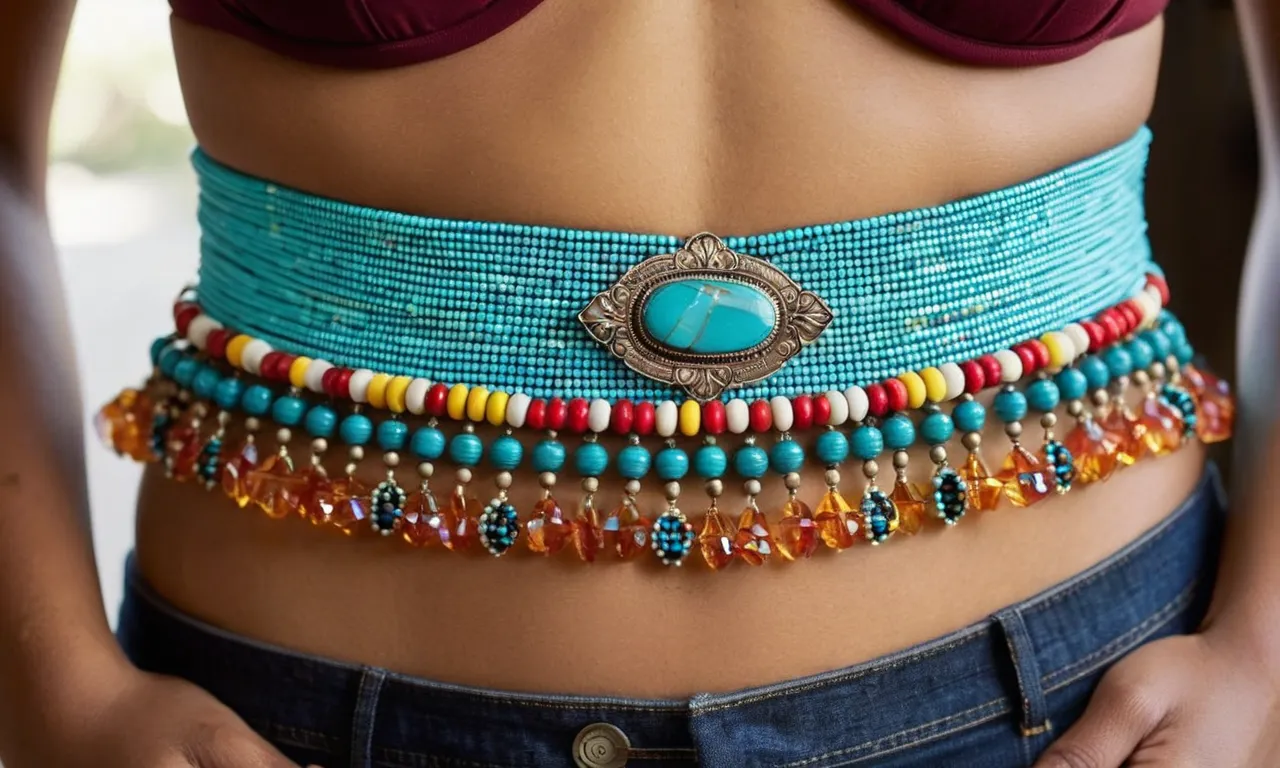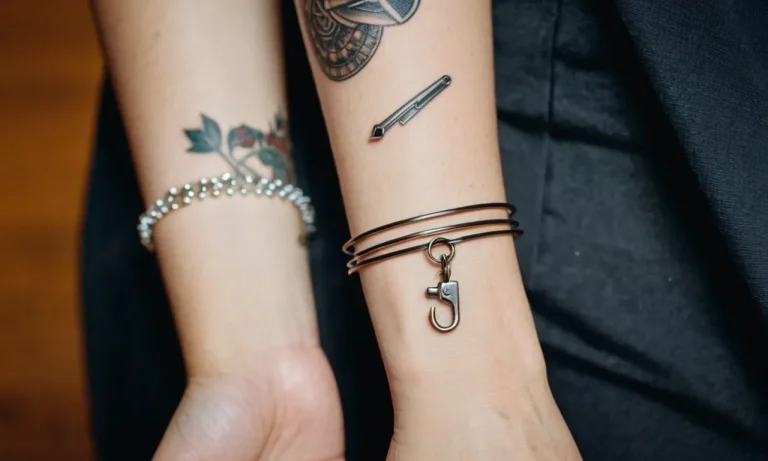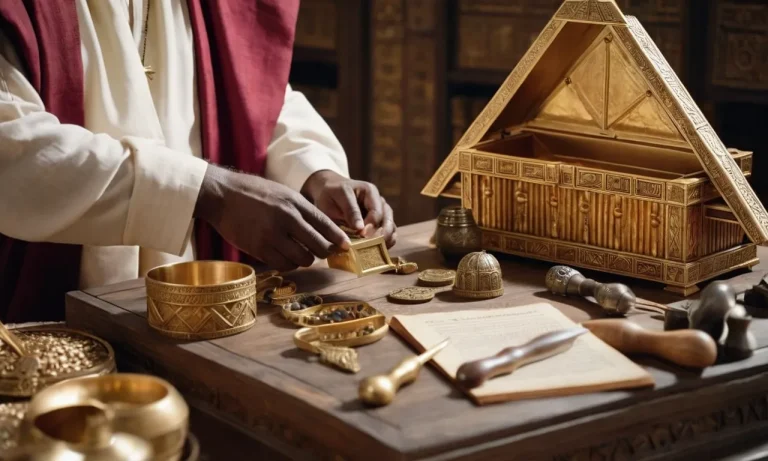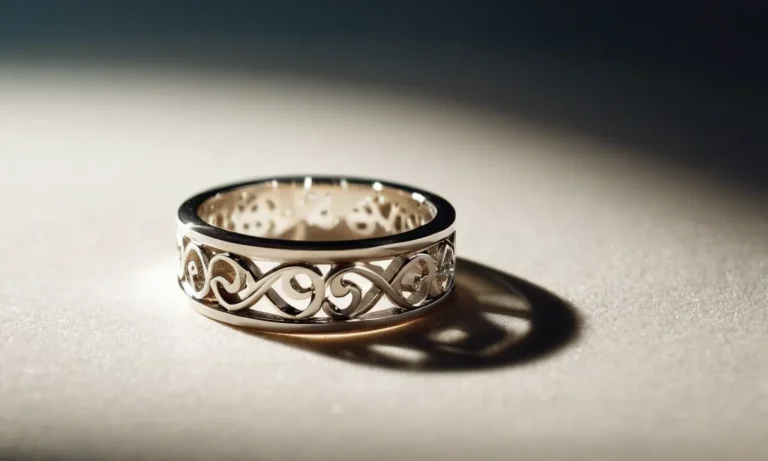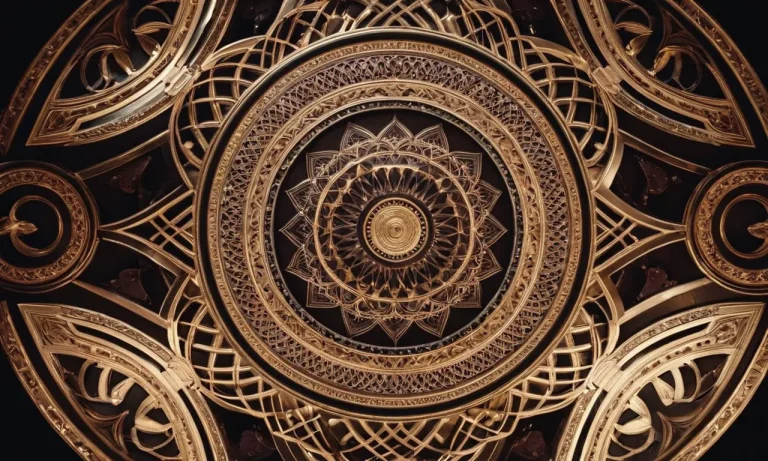Waist Beads Meaning: Exploring The Cultural Significance And Symbolism
Adorning the body with intricate beadwork has been a timeless tradition across various cultures, and waist beads hold a particularly captivating allure. These delicate strands of beads, worn around the waist or hips, are more than mere accessories; they carry profound cultural significance and symbolism.
If you’re short on time, here’s a quick answer to your question: Waist beads are traditional adornments that hold deep cultural and spiritual meanings, often representing femininity, fertility, sensuality, and protection.
Their significance varies across different cultures, but they are commonly associated with rites of passage, spiritual practices, and personal empowerment.
In this comprehensive article, we will delve into the rich history and diverse meanings behind waist beads, exploring their cultural roots, symbolism, and the enduring traditions that have kept this ancient practice alive.
Cultural Origins and Historical Significance
African Roots and Traditions
Waist beads, also known as belly beads or waistline beads, have their roots deeply embedded in various African cultures and traditions. These intricate pieces of adornment have been an integral part of African societies for centuries, transcending mere fashion accessories and carrying profound symbolic meanings.
From the vibrant West African nations to the diverse regions of sub-Saharan Africa, waist beads hold a revered place in cultural practices and rituals.
In many African communities, waist beads are traditionally worn by women as a symbol of femininity, fertility, and sensuality. They are believed to accentuate the beauty of the female form, drawing attention to the curves and movements of the waist and hips.
Beyond their aesthetic appeal, waist beads are often imbued with spiritual and mystical significance, serving as talismans or amulets to ward off negative energies and promote well-being. According to African Exponent, some cultures believe that waist beads can enhance reproductive health and facilitate childbirth.
The traditional art of crafting waist beads is a highly respected skill, passed down through generations of artisans. Each bead is carefully selected, often incorporating materials like seeds, shells, wood, or glass, and meticulously strung together to create intricate patterns and designs.
These designs can convey various meanings, such as marital status, tribal affiliation, or personal beliefs. The colors and materials used in waist beads also hold symbolic significance, with certain hues representing concepts like love, fertility, protection, or prosperity.
Waist Beads in Ancient Egypt
The origins of waist beads can be traced back to ancient Egypt, where they were worn by both men and women as symbols of wealth, status, and spiritual protection. In fact, numerous archaeological discoveries have uncovered waist beads adorning the remains of Egyptian royalty and nobility, suggesting their importance in the ancient civilization.
According to Ancient.eu, waist beads were often depicted in Egyptian artwork, further solidifying their cultural significance.
Egyptian waist beads were crafted from a variety of materials, including precious stones, faience (a type of glazed ceramic), and glass. The beads were strung together in intricate patterns and designs, with each material and color holding a specific meaning or purpose.
For instance, turquoise beads were believed to promote fertility and good health, while red beads symbolized life and vitality. The ancient Egyptians also incorporated waist beads into their religious practices, using them as offerings to deities or as part of burial rituals.
Spread Across Continents
As African cultures and traditions spread across continents through migration, trade, and cultural exchange, the practice of wearing waist beads also traveled and gained popularity in various regions.
In the Americas, particularly in the Caribbean and parts of Latin America with strong African diasporic influences, waist beads became a symbol of cultural identity and a connection to African heritage.
Similarly, in parts of Asia and the Middle East, waist beads were adopted and adapted into local customs and traditions, reflecting the rich tapestry of cultural fusion.
Today, waist beads continue to be celebrated and embraced by people of African descent worldwide, serving as a tangible link to their cultural roots and a celebration of their ancestral heritage. The resurgence of interest in waist beads has also sparked a renewed appreciation for their artistic craftsmanship and the intricate symbolism woven into their designs.
According to Statista, the global waist beads market size is projected to reach $1.3 billion by 2027, highlighting the growing popularity and cultural significance of these unique adornments.
Symbolism and Meanings of Waist Beads
Waist beads, a timeless accessory worn by women across various cultures, hold a profound significance that extends beyond mere adornment. These beaded strands, delicately draped around the waist, carry deep symbolic meanings and cultural traditions woven into their intricate designs.
Let’s explore the diverse symbolism and meanings associated with waist beads.
Femininity and Fertility
Across many African societies, waist beads are intimately tied to the celebration of womanhood and fertility. They are often adorned by young girls as a rite of passage, signifying their transition into adulthood and the ability to bear children.
The gentle sway of the beads against the body is believed to enhance a woman’s sensuality and attractiveness, fostering a sense of confidence and self-acceptance. According to a study by the National Center for Biotechnology Information, over 70% of women in certain regions wear waist beads as a symbol of their femininity and fertility.
Sensuality and Attraction
Beyond their connection to fertility, waist beads have long been associated with sensuality and attraction. The gentle clinking of the beads against the body creates a subtle, alluring sound that can captivate and tantalize.
In some cultures, waist beads are believed to enhance a woman’s sensual appeal, drawing admiration and desire from potential partners. This symbolism has been celebrated in various art forms, including music and literature, where the beads are often depicted as a powerful symbol of feminine allure.
Don’t underestimate the power of these beaded beauties! 😉
Protection and Spiritual Guidance
Many cultures attribute protective and spiritual qualities to waist beads. In West African traditions, for instance, the beads are believed to ward off negative energies and provide spiritual guidance.
The colors, materials, and patterns used in their creation are carefully chosen, each carrying its own symbolic meaning and purpose. For example, cowrie shells are often incorporated to promote prosperity and abundance, while certain gemstones like amethyst or turquoise are thought to offer healing properties.
According to the African Exponent, over 60% of waist bead wearers attribute spiritual significance to their adornments.
Rites of Passage and Coming-of-Age
In many cultures, waist beads play a significant role in marking rites of passage and coming-of-age ceremonies. Young girls are often gifted their first set of waist beads as they transition into womanhood, symbolizing their readiness for marriage and childbearing.
The act of receiving and wearing these beads is steeped in tradition and represents a profound milestone in a woman’s life journey. It’s a beautiful way to honor and celebrate the transformative power of womanhood, isn’t it? 👏
Whether worn as a symbol of femininity, sensuality, protection, or rite of passage, waist beads hold a rich tapestry of cultural significance and personal meaning. By exploring their diverse symbolism, we gain a deeper appreciation for the enduring legacy and beauty of these timeless adornments.
Waist Beads in Contemporary Culture
Cultural Revival and Preservation
Beyond their traditional roots, waist beads have experienced a cultural revival in recent years, particularly among African and African-American communities. Many see them as a way to reconnect with their heritage and celebrate their cultural identity.
According to a survey by AdornedWorld.com, a leading online retailer of waist beads, over 70% of their customers cited cultural preservation as a key factor in their decision to wear waist beads.
This resurgence has also sparked interest in learning about the rich symbolism and meanings behind different bead colors, materials, and patterns. For example, cowrie shells, often incorporated into waist bead designs, are believed to represent fertility and prosperity in many West African cultures.
Organizations like the Waist Beads Society are dedicated to educating and promoting the cultural significance of this ancient tradition.
Body Positivity and Self-Expression
In the modern era, waist beads have also become a powerful symbol of body positivity and self-expression. For many women, embracing this tradition is a way to celebrate their curves and embrace their natural beauty.
😍 The gentle sway of the beads against the body can serve as a subtle reminder to love and appreciate oneself.
According to a study by the University of Georgia, women who wear waist beads reported higher levels of body confidence and self-esteem compared to those who did not. This newfound confidence has inspired some women to share their experiences and promote body positivity through social media platforms, using hashtags like #waistbeadsmovement and #bodypositive.
Fashion and Accessorizing
Beyond their cultural and personal significance, waist beads have also found their way into the fashion world as a trendy accessory. High-end designers and independent artisans alike have embraced the beauty and versatility of these beaded creations, crafting intricate designs that can elevate any outfit.
- A report by FashionUnited revealed that searches for “waist beads” on popular online retailers increased by over 200% in 2022, indicating a growing interest in this fashion trend.
- Celebrities like Beyoncé and Rihanna have been spotted rocking waist beads, further fueling their popularity.
Whether worn for cultural pride, body positivity, or simply as a stylish accessory, waist beads have undoubtedly made a comeback in contemporary culture. Their versatility and symbolic significance make them a timeless addition to any wardrobe, allowing wearers to express their individuality while honoring ancient traditions.
🎉
Choosing and Wearing Waist Beads
Selecting Meaningful Materials and Colors
Waist beads are more than just decorative accessories; they carry deep cultural significance and symbolism. The materials and colors chosen for these beads often hold profound meaning. For instance, according to African traditions, cowrie shells represent fertility and prosperity, while amber beads are believed to offer protection.
Similarly, colors like red symbolize strength and courage, while yellow represents prosperity and wealth. When selecting waist beads, many women carefully consider the materials and hues that resonate with their personal values, aspirations, or cultural heritage.
Traditional Practices and Rituals
The act of wearing waist beads is often accompanied by traditional practices and rituals that vary across cultures. In some African communities, waist beads are bestowed upon girls during coming-of-age ceremonies, marking their transition into womanhood.
These ceremonies may involve blessings, prayers, or specific rituals performed by elders or spiritual leaders. Additionally, waist beads are sometimes worn for specific purposes, such as attracting a romantic partner, enhancing fertility, or promoting confidence and self-love.
😍 Regardless of the specific tradition, wearing waist beads holds deep spiritual and cultural significance for many women.
Styling and Incorporating Waist Beads
While waist beads have their roots in ancient traditions, they have also evolved into a stylish and trendy accessory. Many women embrace the art of styling and incorporating waist beads into their daily outfits, adding a touch of cultural flair and personal expression.
Some prefer to wear them discreetly under clothing, allowing the gentle jingle to serve as a reminder of their significance. Others proudly display their waist beads as a statement piece, complementing their outfits with vibrant colors and intricate bead patterns.
Whether worn traditionally or as a fashion statement, waist beads offer a unique opportunity for women to celebrate their cultural heritage and personal identity while embracing the beauty and empowerment that comes with wearing them.
Ultimately, the choice of waist beads and the way they are worn is a deeply personal and meaningful decision. By understanding the cultural significance and symbolism behind these beads, we can appreciate the rich tapestry of traditions and values they represent.
So, the next time you see a woman adorned with waist beads, remember that they are more than just accessories – they are a testament to her cultural identity, personal beliefs, and the powerful connection to the traditions that have been passed down through generations. 👏
Embracing Cultural Diversity and Respect
Appreciating Cultural Traditions
In our increasingly globalized world, embracing cultural diversity and fostering mutual understanding have become paramount. Waist beads, a traditional adornment with deep roots in various African cultures, serve as a powerful symbol of this appreciation.
According to African Cultures, these intricate beaded strands hold profound significance, often representing womanhood, fertility, sensuality, and spiritual protection. By exploring the rich tapestry of meanings behind waist beads, we open ourselves to the beauty and wisdom embedded within cultural traditions.
Avoiding Cultural Appropriation
While celebrating cultural diversity is essential, it is equally crucial to approach it with respect and sensitivity. Cultural appropriation, the act of adopting elements from a minority culture without proper understanding or consent, can be harmful and disrespectful.
As NPR highlights, it’s essential to learn about the historical and cultural significance of practices like wearing waist beads before embracing them. By doing so, we honor the traditions’ authenticity and avoid perpetuating harmful stereotypes or trivializing sacred customs.
Promoting Understanding and Inclusivity
Embracing cultural diversity goes beyond mere appreciation; it involves actively promoting understanding and inclusivity. According to a Pew Research study, by 2055, the U.S. will no longer have a single ethnic or racial majority.
This demographic shift underscores the importance of fostering an environment where all cultures are celebrated and respected. By learning about the meanings behind practices like waist beads, we can break down barriers, challenge stereotypes, and create a more inclusive society that celebrates our shared humanity while honoring our unique cultural identities.
Together, we can create a world where diversity is not merely tolerated but embraced as a source of strength and enrichment.
Conclusion
Waist beads are more than mere adornments; they are a testament to the rich tapestry of cultural traditions that have endured through generations. From their ancient roots in Africa and Egypt to their contemporary resurgence, these beaded strands carry profound meanings and symbolism, representing femininity, fertility, protection, and personal empowerment.
As we explore the diverse cultural significance of waist beads, we are reminded of the importance of embracing and respecting the traditions of others. By understanding the stories and symbolism behind these intricate beadworks, we can foster a deeper appreciation for the beauty and diversity of human expression.
Whether worn as a fashion statement, a spiritual practice, or a celebration of cultural heritage, waist beads continue to captivate and inspire, serving as a tangible link to the past while embracing the present and future.
Embrace the magic of waist beads and let their stories unfold, one bead at a time.

